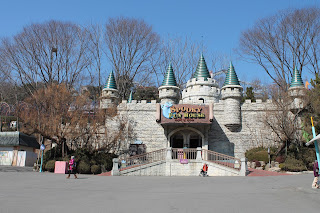Korean Cuisine ~ Korean cuisine originated
from prehistoric
traditions in the Korean
peninsula evolving through a complex interaction of
environmental, political, and cultural trends.
Korean cuisine is largely based upon rice, vegetables,
and meats. Traditional Korean
meals are noted for the number of side dishes (banchan)
that accompany steam-cooked short-grain rice. Kimchi is served often, sometimes at every
meal. Commonly used ingredients include sesame oil, doenjang (fermented bean paste), soy sauce,
salt, garlic, ginger, pepper flakes and gochujang (fermented red chili paste).
Ingredients and dishes vary by province. Many
regional dishes have become national, and dishes that were once regional have
proliferated in different variations across the country. The Korean royal court cuisine once brought all of the unique
regional specialties together for the royal family. Meals are regulated by
Korean cultural etiquette.
 |
| Full Set of Korean Cuisine |
















